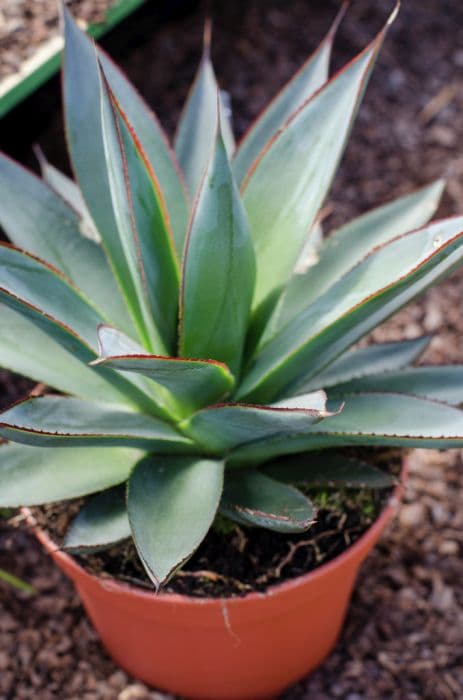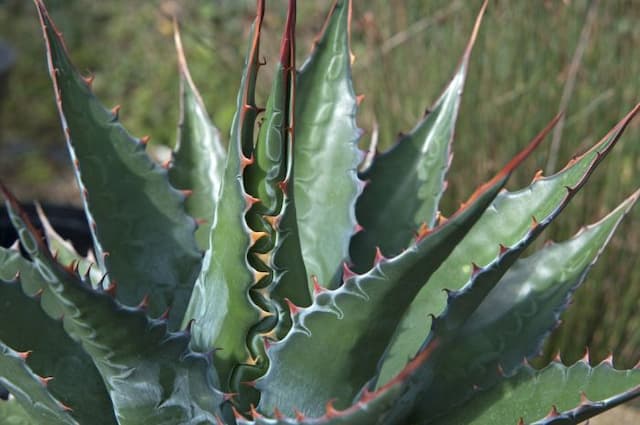Siberian Squill Scilla siberica 'Spring Beauty'

ABOUT
Scilla siberica 'Spring Beauty', also known simply as Siberian squill, is a charming and vibrant spring-flowering plant. Recognizable for its striking blue flowers, each bloom forms a bell shape with six petals that gently open outwards, revealing a slightly paler center. The flower buds initially appear encapsulated in a protective green bract before they burst open to display their full splendor. These dazzling azure blossoms often have fine, delicate veins running through the petals, which can sometimes exhibit a slightly darker or lighter shade of blue. Underneath the flowers, the Siberian squill has thin, dark green, glossy leaves. They are long and somewhat strappy in appearance, arching gracefully over the ground and providing a fresh, verdant backdrop for the vivid blue of the blooms. The plant displays a natural mounding habit, with the leaves and flowers emerging directly from the soil line. The overall visual effect of Siberian squill is a carpet of blue flowers that seems to float above a lush sea of greenery, offering a delightful visual indication that spring has indeed arrived. Its appearance can add a striking contrast when intermingled with other spring flowers and is especially captivating when planted en masse.
About this plant
 Names
NamesFamily
Asparagaceae
Synonyms
Siberian Squill, Wood Squill, Spring Beauty
Common names
Scilla siberica 'Spring Beauty'
 Toxicity
ToxicityTo humans
Siberian squill is considered to have a certain level of toxicity to humans. If ingested, parts of the plant can cause gastrointestinal upset, including symptoms such as nausea, vomiting, and diarrhea. As with many plants that contain toxic compounds, the severity of symptoms can vary based on the quantity ingested and the sensitivity of the individual. Ingesting any part of Siberian squill should be avoided, and medical attention sought if ingestion occurs.
To pets
Siberian squill is also toxic to pets, including cats and dogs. Ingestion of the plant can lead to gastrointestinal upset with symptoms such as vomiting and diarrhea. Depending on the amount consumed, more serious health issues can arise. It is vital to prevent pets from chewing on or ingesting any part of Siberian squill, and to seek veterinary care immediately if they do.
 Characteristics
CharacteristicsLife cycle
Perennials
Foliage type
Deciduous
Color of leaves
Green
Flower color
Blue
Height
0.5 feet (15 cm)
Spread
0.5 feet (15 cm)
Plant type
Bulb
Hardiness zones
2
Native area
Eurasia
Benefits
 General Benefits
General Benefits- Visual Appeal: Scilla siberica 'Spring Beauty', commonly known as Siberian squill, showcases vibrant blue flowers that add striking color to spring gardens.
- Easy to Grow: Siberian squill is a low-maintenance plant that is relatively easy to cultivate in a variety of soil types and climatic conditions.
- Attracts Pollinators: The flowers provide an early source of nectar for bees and other pollinating insects awakening in spring.
- Naturalizing: Siberian squill has the ability to spread and create a carpet of blue when conditions are favorable, effectively filling in garden spaces and creating naturalistic drifts.
- Resilient: Siberian squill is resistant to deer and other herbivores, making it an ideal choice for gardens susceptible to browsing animals.
 Medical Properties
Medical PropertiesThis plant is not used for medical purposes.
 Air-purifying Qualities
Air-purifying QualitiesThis plant is not specifically known for air purifying qualities.
 Other Uses
Other Uses- Photography Enhancer: Siberian Squill's vibrant blue flowers are commonly used to create striking springtime photographs for landscaping portfolios or botanical showcases.
- Garden Design Teaching Tool: Horticulture educators can use Siberian Squill to teach design principles for color contrast and spring bulb layering in gardens.
- Children's Garden Adventure: These plants can be included in a children's garden to inspire young botanists with their early bloom and to track the arrival of spring.
- Eco-Tourism Attraction: Fields of Siberian Squill can serve as a seasonal attraction for eco-tourists in regions where they blanket the ground in early spring.
- Creative Arts Inspiration: The striking color of Siberian Squill can provide inspiration for artists and craftspeople, influencing fabric design, painting, and other decorative arts.
- Florists' Accent Elements: Florists may use the cut flowers or bulbs of Siberian Squill to create unique and eye-catching floral arrangements.
- Educational Material: These plants can be used in educational materials to discuss the importance of early pollinators and the synchronization of blooming cycles with them.
- Theme Gardens: Siberian Squill can be used as part of a "blue-themed" or "cool-colored" garden to demonstrate thematic garden planning based on color.
- Cultural Exhibits: Certain communities may include Siberian Squill in cultural exhibits or festivals that celebrate springtime flowers and international botanical diversity.
- Dye Source: Though not commonly used, the vivid blue petals of Siberian Squill can potentially be worked with to create natural plant-based dyes for fabrics or crafts.
Interesting Facts
 Feng Shui
Feng ShuiThe Siberian Squill is not used in Feng Shui practice.
 Zodiac Sign Compitability
Zodiac Sign CompitabilityThe Siberian Squill is not used in astrology practice.
 Plant Symbolism
Plant Symbolism- Resilience and Determination: Siberian Squill often blooms early in the spring, sometimes pushing through snow, symbolizing the ability to persevere and thrive even in challenging conditions.
- Hope and New Beginnings: As one of the first flowers to emerge after winter, it is a herald of spring, representing hope and the start of a new cycle of life and growth.
- Constancy and Fidelity: The recurring and reliable blooming of this plant every spring is associated with faithfulness and loyalty in relationships.
 Water
WaterSiberian Squill 'Spring Beauty' should be watered moderately when the top inch of soil feels dry to the touch, typically once a week. During its active growth period in spring, ensure it receives about 1 gallon of water per square foot each month. During dormancy in summer, reduce watering. Avoid waterlogging by ensuring good drainage, as excess moisture can lead to bulb rot. During prolonged dry spells, additional watering may be necessary to keep the soil consistently moist but not saturated.
 Light
LightSiberian Squill 'Spring Beauty' thrives in partial to full shade, making it ideal for planting under deciduous trees where it can receive dappled sunlight. A spot that offers protection from harsh afternoon sun will maintain vibrant flower color and prevent premature wilting.
 Temperature
TemperatureSiberian Squill 'Spring Beauty' can endure winter temperatures as low as -20°F and is hardy in USDA zones 2 through 8. The plant prefers cool springs and can survive brief periods of frost. The ideal growing temperature range for this perennial is between 35°F and 70°F.
 Pruning
PruningPruning is usually not necessary for Siberian Squill 'Spring Beauty' unless you wish to deadhead spent flowers to maintain a tidy appearance. However, leaving the seed heads can promote natural self-seeding for more plants the following season. Removal of withered foliage should be done only after it has yellowed and died back naturally, typically late in the spring season.
 Cleaning
CleaningNot needed
 Soil
SoilThe Siberian Squill 'Spring Beauty' thrives in well-draining soil with a mixture of loam, sand, and organic matter. A pH of 5.5 to 7.0 is ideal for its growth. Amend soil with compost before planting to improve fertility and drainage.
 Repotting
RepottingSiberian Squill 'Spring Beauty' generally does not require frequent repotting as it is a bulbous plant. It can be repotted every 3-4 years or when the bulbs become overcrowded, preferably in the fall after foliage has died back.
 Humidity & Misting
Humidity & MistingSiberian Squill 'Spring Beauty' tolerates average humidity levels typical of outdoor conditions. It does not have specific humidity requirements and adapts well to the natural humidity present in the environment where it grows.
 Suitable locations
Suitable locationsIndoor
Place in bright, indirect light and keep soil lightly moist.
Outdoor
Plant in partial shade, moist well-draining soil, and mulch.
Hardiness zone
2-8 USDA
 Life cycle
Life cycleScilla siberica 'Spring Beauty', commonly known as Siberian Squill, begins its life cycle when its bulb, planted in the fall, goes through a period of dormancy in the cold winter months, using this time to develop roots. As temperatures rise in early spring, the plant breaks dormancy, sending up narrow, strap-shaped leaves and a flower stalk bearing delicate, nodding, blue flowers. After blooming, the flowers are pollinated, often by bees, and develop small seed capsules that disperse seeds, allowing for reproduction and spread. The leaves photosynthesize to produce energy, which is stored back in the bulb for the next year's growth. Following seed dispersal and the completion of its growth cycle by late spring, the foliage dies back, and the plant retreats into its bulb, reentering a state of dormancy throughout the summer until the next fall. This cycle repeats annually, with the bulbs multiplying over time and forming clumps that can be divided for propagation.
 Propogation
PropogationPropogation time
Spring-Early Summer
Siberian Squill, or Scilla siberica 'Spring Beauty', is most commonly propagated through division of its bulbs, ideally after the foliage has died back in late spring or early summer. Once the plants have finished blooming and the leaves start to yellow, gently dig up the clumps of bulbs, being careful not to damage them. Separate the bulbs by gently pulling them apart, ensuring that each offset has a portion of the basal plate to grow a new plant. These offsets can be immediately replanted about 3 inches deep (approximately 7.6 centimeters) and spaced a few inches apart to allow room for growth. Over time, they will develop into mature bulbs and produce their own blooms.









